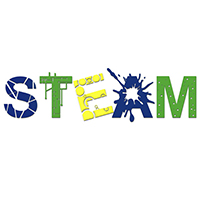Engineering – Take a closer look
Alex Farrer, one of our Scientists in Residence, looks at the value of science capital and the potential that this can have on future careers in the sciences.
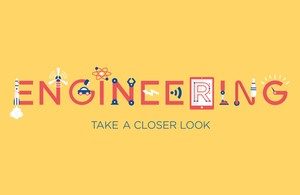
2018 is the Year of Engineering – a government campaign to support the engineering profession in recruiting tomorrow’s engineers. Over the last 30 years efforts to attract girls and women into engineering have been unsuccessful. Currently less than 1 in 8 of the engineering workforce is female; boys are 3.5 times more likely to study A level Physics than girls; and boys are five times more likely to gain an engineering and technology degree (Engineering UK 2017).
Our STEAM focus at Wimbledon High provides insights into a variety of opportunities in engineering and in related areas such as design, sports, medicine and computer science. Through STEAM we strive to broaden what counts as science and help build the skills that future employers will value highly such as communication, problem solving and adaptability. We aim to encourage all pupils from Reception to Year 13 to think that STEAM is relevant and important to their lives, both now and in the future, and aim to build their science capital.
A national survey of young people aged between 11 and 15 found that 5% had a high level of science capital (ASPIRES projects).
Professor Louise Archer from UCL Institute of Education, directs the ASPIRES projects and has developed the concept of science capital which refers to someone’s science related qualifications, understanding, knowledge, interests, attitudes and contacts.
The Science Capital Teaching Approach aims to build on the existing science capital of pupils, encourage engagement with science and promote social justice.
If you have a high science capital you might:
- watch scientific TV programmes
- have science qualifications
- enjoy reading popular science books
- have friends and relatives that work in science and engineering professions
- visit science museums and fairs
- engage in science related hobbies or activities
- talk about science and engineering news topics with people you know
The evidence from this research project shows that the more science capital a pupil has the more they will aspire to continue with sciences post-16 and see science and engineering as fulfilling roles.
Below are some suggestions that schools could consider to build the science capital of pupils and adults in their communities so that everyone sees science and engineering as something of value.
- Host a family STEAM challenge event. This will help to encourage science talk with family members and show that STEAM is for everyone in the school community.
- Encourage science and engineering activities to “pop up” in the playground. Pupils, parents or staff could run the activities and the high visibility will encourage all members of the school community to get involved.
- Celebrate interest in scientific TV programmes and films. For example show a screening of a film like Hidden Figures with scientists or historians on hand to answer any questions, or encourage staff and pupils to talk about the science on TV they have seen.
- Signpost STEAM books, magazines and events to staff and pupils. An example is Itch by Simon Mayo, which contains a great deal of chemistry, and there are also some excellent science magazines such as Whizz Pop Bang and BBC Focus that can be linked to lesson content.
- Think about ways to get families talking about STEAM homework that is set. Linking tasks to science or technology in the news will encourage talk as will setting tasks where help from adults is very much encouraged such as making a marble run, growing a mystery seed or taking a STEAM photograph.
- Find out the sorts of science interests, hobbies, and expertise pupils and their families have so that lessons and assemblies can be personalised. Setting a “Science and me” homework will he
 lp to discover how many parents and pupils you have in your class with scientific interests and skills.
lp to discover how many parents and pupils you have in your class with scientific interests and skills. - Elicit and value the wider links that pupils have to science and engineering and draw upon them in lessons. For example using the experience of a gymnast in your class in a physics lesson will enable pupils to broaden what they thinks counts as science in their life.
- Invite scientists and engineers that pupils will relate to into lessons and encourage them to talk about the skills and attributes they use. This could be a parent who uses STEAM skills in their job, a STEM Ambassador or someone who has relevant interest and knowledge. Even better if the scientist or engineer visits a lesson other than science! @STEMAmbassadors
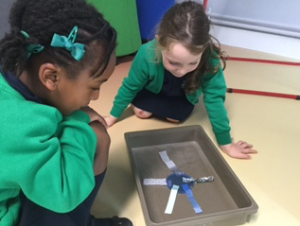
If you are a primary teacher and would like to find out more about how you can build science capital in your school we will be hosting a Science Capital Workshop on February 7th 1.30-3.30pm. Please contact joanna.sandys@wim.gdst.net if you would like to come along.
If any parents with STEAM expertise would enjoy sharing some of their knowledge, skills and insights with our pupils please do let antonia.jolly@wim.gdst.net know and we will be in touch.
We look forward to enriching the science capital of our community in this exciting Year of Engineering as our STEAM journey continues.
Follow @STEAM_WHS on Twitter – #YoE
O Chemistree, O Chemistree: The Wonder of Chemistry at Christmas
By Georgina Hagger, Year 12.
In this article I will endeavour to convince you of the magic of Chemistry, through Christmas related examples, and why we should all care a little bit more about not only the science itself but its contribution to our daily lives.

It’s the most wonderful time of the year, and whilst we all enjoy the lights, presents and the much-anticipated food, the reason behind all of these is forgotten. What makes your turkey go brown, what makes the smell of Christmas trees so enticing and what do your wrapping paper and Sellotape all have in common? To answer all these questions, we need one thing only: Chemistry. Chemistry is what makes this time of the year so enjoyable and yet it is overlooked, ignored and underrated.
When cooking many foods, a reaction called the Maillard Reaction is undergone: such is the case with the iconic Christmas Turkey. This is a chemical reaction between reducing sugars (for example glucose) and amino acids, and the different combinations of these two components is what makes the many different flavour compounds produced in this reaction. In turkey, some of these compounds are furans which produce the meaty, burnt flavours and also pyrazines for the cooked, roasted flavours. This reaction is what makes crisps go golden brown, along with giving some meat its brown colour, as melanoidins are formed which contribute to the brown colouration in cooking.
The smell of Christmas Trees, and pine trees more generally, is much-loved. This scent comes from three main compounds; the two types of pinene (alpha-pinene and beta-pinene) and bornyl acetate. It is this bornyl acetate that produces the pine smell, making it commonly used in fragrances and air conditioners for that fresh aroma. This smell originates from the just three elements that the compound is made from: carbon, hydrogen and oxygen.
When giving a gift at Christmas, or any other time of the year, the wrapping of the present is an important part. Whilst, wrapping paper and Sellotape do not immediately seem to be that similar, they are in fact both based on the same fundamental compound, the very same compound that gives plants their strength: cellulose. Whilst Sellotape needs an additional adhesive element to it, these two items are largely similar.
These ideas are all easy to understand, yet they are never talked about. Chemistry is simply defined as “the branch of science concerned with the substances of which matter is composed” and then how these substances react with each other. When the discipline is defined in such a way it is hard to see how this cannot be part of our everyday lives. Rosalind Franklin, the brilliant and unfortunately often forgotten chemist, once said:
“Science and everyday life cannot and should not be separated.”
However, we seem to have strayed from this, and now Chemistry is just for the people in white coats and goggles, whilst the vast majority of the others, according to a 2015 survey by the Royal Society of Chemistry, seem to only associate the subject with their school days and scientists. Yet we take selfies on our lithium powered smart phones, brush our teeth with our fluoride filled toothpastes and cure headaches with medicine without even knowing how any of this actually happens.
You may now ask, why do we need to know about Chemistry? And there are so many answers to that question; the emergence of disciplines like Green Chemistry to combat the disastrous effect we have on our planet and the shortage of engineers in this country alone, means more Chemists are needed now than ever before. As well as this, there is the simple answer of why should people not know, why should everyone not have the chance to understand the world around them? In recent weeks we have seen guides written by scientists, including chemists, to explain the use of scientific methods – such as DNA fingerprinting – to judges in order to aid better understanding of the chemistry that is used to prosecute and defend people in court. This is just one example of how chemistry is returning to the forefront of society and so needs to be understood.
By encouraging the sciences, and encouraging the explanation of the chemistry we all use; this makes one area of science so much more interesting and accessible to everyone. If everyone can hear about how this discipline is connected to their current situation through the engaging explanations of something like Christmas or cooking or electronics, then perhaps less people will feel marginally indifferent about Chemistry and more will feel interested and passionate about a subject that richly deserves and needs it.
So, as you pull a cracker this Christmas, become disgusted at the bitter taste of a brussels sprout, or watch the fireworks explode at New Year, remember to think about why and how these things happen and add a little bit of Chemistry induced magic to your life.
Follow @Chemistry_WHS on Twitter.
Why being bad at Maths just doesn’t add up
By Helena Rees, Head of Maths.
Many still see people who are good at maths as slightly weird, geeky, uncool. Why is this? Why should we study maths?
A couple of years ago Professor Brian Cox hosted ‘A Night with the Stars’ on the BBC. From the lecture theatre of the Royal Institution, he undertook to explain among other things how diamonds are made up of nothingness and how things can be in an infinite number of places at once. He took the audience, made up of famous faces, celebrities and scientists, through some of the most challenging concepts in physics, using maths and science experiments as he went along. It was a truly fascinating programme and if nothing else demonstrated the power of numbers and the speed with which they can make a grown man cry. Jonathan Ross (43 mins approx) was invited to assist Brian Cox in a maths calculation using standard form. The look of sheer panic on Ross’s face, followed by him saying, “This is the worst thing that’s happened to me as an adult” and “I’m sweating”, just about sums up many people’s attitude towards maths.
Mrs Duncan spoke to the whole school this week and used this example. Imagine going out for dinner with six friends and the bill comes. When the time comes to split the bill between seven, the bill is shuffled to the maths teacher or accountant with a slightly shame-faced look saying, “I am rubbish at maths” or “I couldn’t do maths at school”. Imagine, however, that same group of people sitting down to order and someone asking for the menu to be read out because they can’t read it. Few will admit that they can’t read as the stigma of this would be hugely embarrassing. Yet no such reservations exist for maths with individuals almost boasting about their lack of maths ability. Why is this?
Many still see people who are good at maths as slightly weird, geeky, uncool. A PhD in Maths or Physics at the end of a name tends to conjure up images of social awkwardness — people more to be pitied. On the whole surveys of attitudes over the past 50 years have shown that the cultural stereotype surrounding ‘scientist and mathematician’ has been largely consistent — and negative. However, things are changing, in November 2012, President Obama held a news conference to announce a new national science fair. “Scientists and engineers ought to stand side by side with athletes and entertainers as role models, and here at the White House, we’re going to lead by example,” he said. “We’re going to show young people how cool science can be.” The idea that scientists, mathematicians and engineers could attain iconic status is exciting.
The popularity of television shows such as ‘Think of a Number, ‘Countdown’ and more recently the use of numbers in ‘Numb3rs’, and ‘How Do They Do That?’ have boosted the public’s perception of Maths. CSI has done more for boosting number of students of forensic science than any careers fair. The Telegraph recently reported that students who had a Maths A Level earned on average £10,000 more than a student without. Perhaps statistics like these would encourage more students to take the subject seriously. A report by think-tank Reform estimates that the cost to the UK economy between 1990 and 2008 of not producing enough home-grown mathematicians was £9 billion, such is the value of maths expertise to business.
Marcus du Sautoy, second holder of the Charles Simonyi Chair in the Public Understanding of Science at the University of Oxford says he can’t understand the pride there is in being bad at Maths. “It’s bizarre why people are prepared to admit that because it’s an admission that you can’t think logically. Maths is more than just arithmetic. I would rather do business with someone who admits they’re good at Maths. You don’t get that in the Far East. In Korea or China they’re really proud of being good at Maths because they know the future of their economies depend on it, their finances depend on it. Mobile phones, the internet, Playstations and Google all depend on Maths,” he says. “If people realised that, then they wouldn’t poke fun at it so easily. In today’s information age, Mathematics is needed more than it ever was before – we need Maths. Problem solving skills are highly prized by employers today. There is an increasing need for Maths and the first step needed is a change in our attitudes and beliefs about Maths.”
It is true that many of us will not do another quadratic equation or use trigonometry in our daily lives. However, Mathematics is more than just the sum of subject knowledge. The training to become a scientist or an engineer comes with a long list of transferable skills that are of enormous value in the ‘outside world’. Communication skills, analytical skills, independence, problem-solving skills, learning ability — these are all valuable and at the top of Bloom’s taxonomy. But scientists, mathematicians and engineers tend to discount these assets because they are basic requirements of their profession. They tend to think of themselves as subject-matter experts rather than as adaptable problem solvers.
We have all heard of Pythagoras and his famous theorem. The theorem states that the sum of the squares on the two shorter sides of a right angle triangle sum to the square on the hypotenuse, more commonly shortened to a2 + b2 = c2. In 1637 Pierre de Fermat postulated that no three positive integers a, b, and c satisfy the equation an + bn = cn for any integer value of n greater than 2. For example to a3 + b3 = c3 After his death, his Fermat’s son found a note in a book that claimed Fermat had a proof that was too large to fit in the margin. It was among the most notable theorems in the history of mathematics and prior to its proof, it was in the Guinness Book of World Records as the “most difficult mathematical problem”.
(https://plus.maths.org/content/fermats-last-theorem-and-andrew-wiles ) However, in 1994 Andrew Wiles, published a proof after 358 years of effort by Mathematicians. The proof was described as a ‘stunning advance’ in the citation for his Abel Prize award in 2016. You can watch an interview with Andrew Wiles by Hannah Fry where he was interviewed this week in the London Public Lecture Series organised by Oxford University.
In a recent article Wiles commented “What you have to handle when you start doing Mathematics as an older child or as an adult is accepting the state of being stuck. People don’t get used to that. They find it very stressful.” He used another word, too: “afraid”. Even people who are very good at Mathematics sometimes find this hard to get used to. They feel they’re failing. “But being stuck, isn’t failure. It’s part of the process. It’s not something to be frightened of. Then you have to stop. Let your mind relax a bit…. Your subconscious is making connections. And you start again—the next afternoon, the next day, the next week.”
Patience, perseverance, acceptance—this is what defines a Mathematician.
Hilary Mantel, novelist and writer of Wolf Hall writes “If you get stuck, get away from your desk. Take a walk, take a bath, go to sleep, make a pie, draw, listen to music, meditate, exercise; whatever you do, don’t just stick there scowling at the problem. But don’t make telephone calls or go to a party; if you do, other people’s words will pour in where your lost words should be. Open a gap for them, create a space. Be patient” Perhaps Mathematicians and novelists are so different after all?
When it comes to Mathematics people tend to believe that this is something you’re born with, and either you have it or you don’t and this is the common refrain at parents evenings. But that’s not really the experience of Mathematicians. We all find it difficult. It’s not that we’re any different from someone who struggles with Mathematics problems in junior school…. We’re just prepared to handle that struggle on a much larger scale. We’ve built up resistance to those setbacks. A common comment on parents evening is to delegate the Maths homework to dad as that is ‘his thing’. What message does this give our girls of today? That this is a subject that boys are good at.
Luckily for us here at Wimbledon High School we have a strong culture of doing well in Maths. We have excellent results at iGCSE and there are over 50 girls this year in year 12 alone studying some form of post 16 Mathematics qualification with a view to a STEM career. The new Steam room is an exciting initiative to be part of. A recent article in the National Centre for the Excellence in Teaching of Mathematics journal, asked how can we get more girls to study A Level Maths. The answer at WHS? Keep doing what we are doing well and continue to be excited and positive about the beauty and the magic of numbers.
STEAM

By Alex Farrer, Scientist in Residence.
Since the launch of our STEAM (Science, Technology, Engineering, Arts and Maths) space in September, STEAM lessons, activities, clubs and assemblies have been delivered by the new Scientist in Residence team. This has created a buzz of curiosity around the school and enabled “STEAM” to be injected into the curriculum, but what is exactly going on, and why?
It is frequently reported in the press that thousands of additional science and engineering graduates are needed each year and many national initiatives aim to encourage more girls to aspire to such careers. However it is still the case that most pupils decide by the age of 10 that science is “not for them”. They enjoy science, they are good at science, but they think that other people become scientists and engineers. The STEAM initiative aims to encourage more girls to aspire to study science, technology, art and mathematics subjects post 16, but also to develop STEAM skills in all pupils. Not every pupil will aspire to a career in science and engineering, but every pupil will benefit from added exposure to STEAM. Employers and universities are increasingly looking for candidates who have problem solving skills, consider the impact of their decisions, use their imagination, communicate well, work well in teams and cope with frustrations, problems and difficulties. Cross curricular STEAM activities not only help to develop these skills for every pupil, but also show how relevant the subjects of science, technology, engineering and mathematics are to all subjects.
More information is available here about the ASPIRES and ASPIRES 2 studies which track the development of young people’s science and career aspirations and also here about the benefits of keeping options open for possible engineering careers.
This new initiative at Wimbledon High aims to promote STEAM cross curricular activity for all year groups from Reception to Year 13. The Scientist in Residence team consists of experts in computer science, medicine and STEAM teaching and learning, who are able to plan activities that are practical, challenging, engaging and linked to real life situations. Visiting engineers and scientists enrich the projects and links are made to STEAM careers. In the lessons things might go wrong, groups may have to start all over again, team members might disagree and tasks may be really difficult to succeed in. Coping with the epic fails that can occur when imaginatively attempting to solve a STEAM challenge is all part of the benefit though, and there is also a lot of laughter and fun. The lessons can certainly be classed as “serious play”!
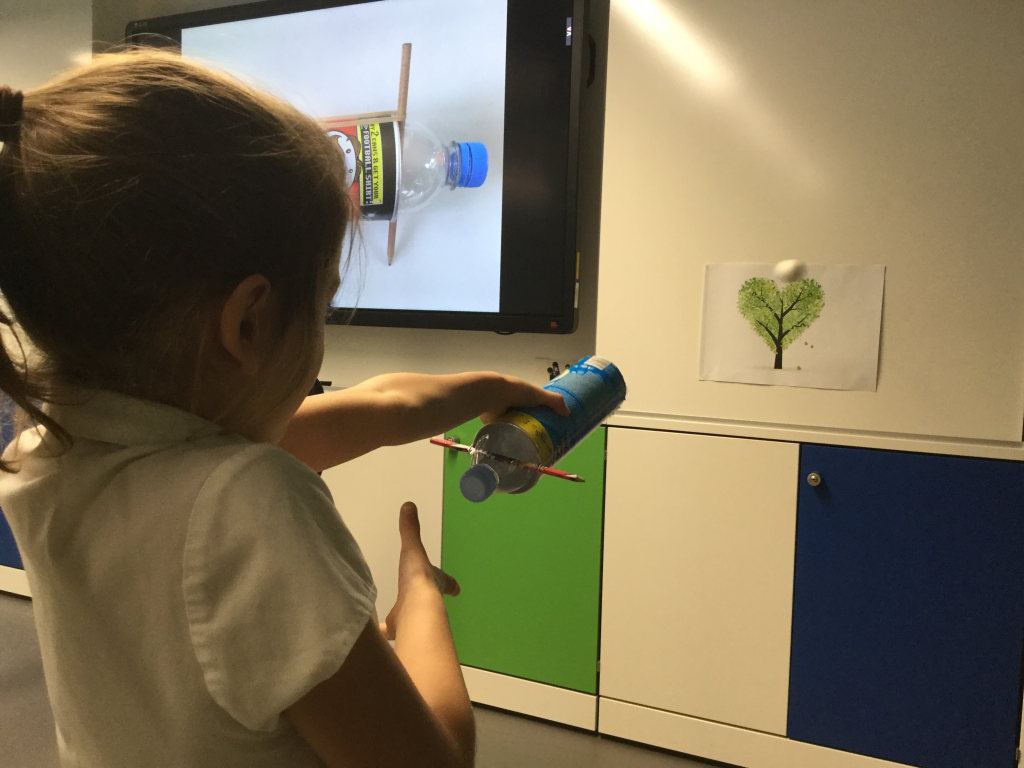
These are just a few examples showing how STEAM is beginning to form…
• Year 3 launching projectiles ‘Into the Woods” 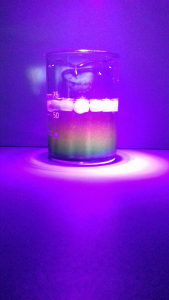
• KS3 being creative with Minecraft Education Edition
• Year 7 using their physics knowledge to capture amazing light and colour photographs at the beginning of their art topic
• Year 6 learning about sensors and coding with micro:bits
• Year 1 becoming rocketeers
• Year 7 creating pigments for Joseph’s technicolor dreamcoat in R.S.
• KS3 gaining medical insights into the Black Death in History
• KS3 pupils designing and building a City of Tomorrow
• Year 5 designing ocean grabbers inspired by the R.S.S. Sir David Attenborough
• Year 4 controlling machines built with LEGO WeDo
Year 12 are also beginning a joint project with local schools and scientists from UCL and Imperial College as part of the ORBYTS initiative – Original Research By Young Twinkle Students – an exciting project using mass spectrometry to look at exoplanet atmospheres which includes the opportunity for students to be co-authors on an academic paper. There may even be a robot orchestra in the making, so there is certainly a variety of STEAM forming!
What all of these activities have in common is that they aim to promote STEAM dialogue around the school. The year 6 academic committee have been putting intriguing photographs with an attached question around the school to promote just this sort of discussion, whether it might be year 8 on their way into lunch or parents chatting while waiting to pick up year 2.

What happened here?
We want to show students and adults in our community that STEAM is something done by us all. As an adult yourself you may have felt in the “not for me” category – you might have given up science early, or not felt that it was your best subject. As role models we all need to show that we are interested in talking and getting involved in STEAM, so that no one in our community is in the “not for me” category. Helping with a competition entry, discussing Blue Planet 2, using STEAM news articles or photos as hooks for lessons, all help to inject STEAM into the school community.
Follow us on Twitter @STEAM_WHS to see more of what is going on and look out for future blogs on the importance of building science capital and using STEAM photos to inspire and engage. The following web links are examples of the many cross curricular ideas available for all age groups that could be used in lessons and at home. Create some STEAM!
https://www.stem.org.uk/cross-curricular-topics-resources
https://www.stem.org.uk/welcome-polar-explorer-programme
https://practicalaction.org/challengesinschools
The Rapid Growth of Artificial Intelligence (AI): Should We Be Worried?
By Kira Gerard, Year 12.
“With artificial intelligence we are summoning a demon.” – Elon Musk
In 2016, Google’s AI group, DeepMind, developed AlphaGo, a computer program that managed to beat the reigning world champion Lee Sedol at the complex board game Go. Last month, DeepMind unveiled a new version of AlphaGo, AlphaGo Zero, that mastered the game in only three days with no human help, only being given the basic rules and concepts to start with. While previous versions of AlphaGo trained against thousands of human professionals, this new iteration learns by playing games against itself, quickly surpassing the abilities of its earlier forms. Over 40 days of learning by itself, AlphaGo Zero overtook all other versions of AlphaGo, arguably becoming the best Go player in the world.
Artificial intelligence is defined as a branch of computer science that deals with the simulation of intelligent behaviour in computers, allowing machines to imitate human behaviour in highly complex ways. Simple AI systems are already wide-spread, from voice-recognition software such as Apple’s Siri and Amazon Echo, to video game AI that has become much more complex in recent years. It plays a key role in solving many problems, such as helping with air traffic control and fraud detection.
However, many people are concerned with the continued advancement of artificial intelligence potentially leading to computers that are able to think independently and can no longer be controlled by us, leading to the demise of civilisation and life as we know it. In 2014 Elon Musk, the tech entrepreneur behind innovative companies such as Tesla and SpaceX, stated in an interview at MIT that he believed that artificial intelligence (AI) is “our biggest existential threat” and that we need to be extremely careful. In recent years, Musk’s view has not changed, and he still reiterates the fear that has worried humanity for many years: that we will develop artificial intelligence powerful enough to surpass the human race entirely and become wholly independent.
As demonstrated in a multitude of sci-fi movies – 2001: A Space Odyssey, The Terminator, Ex Machina, to name a few – artificial intelligence is a growing concern among us, with the previously theoretical concept becoming more and more of a reality as technology continues to advance at a supremely high pace. Other scholars, such as Stephen Hawking and Bill Gates, have also expressed concern about the possible threat of AI, and in 2015 Hawking and Musk joined hundreds of AI researchers to send a letter urging to UN to ban the use of autonomous weapons, warning that artificial intelligence could potentially become more dangerous than nuclear weapons.
This fear that AI could become so powerful that we cannot control it is a very real concern, but not one that should plague us with worry. The current artificial intelligence we have managed to develop is still very basic in comparison to how complex a fully independent AI would need to be. AlphaGo’s Lead Researcher, David Silver, stated that through the lack of human data used, “we’ve removed the constraints of human knowledge and it is able to create knowledge itself”. This is an astonishing advancement, and signals huge improvements in the way we are developing artificial intelligence, bringing us a step closer to producing a multi-functional general-purpose AI. However, AlphaGo Zero’s technology can only work with tasks that can be perfectly simulated in a computer, so highly advanced actions such as making independent decisions are still out of reach. Although we are on the way to developing AI that matches humans at a wide variety of tasks, there is still a lot more research and development needed before advanced AI will be commonplace.
The artificial intelligence we live with every day is very useful for us, and can be applied in a variety of ways. As addressed by Mr Kane in last week’s WimTeach blog, technology has an increasing role in things such as education, and we are becoming ever more reliant on technology. Artificial intelligence is unquestionably the next big advancement in computing, and as Elon Musk stated in a recent interview: “AI is a rare case where I think we need to be proactive in regulation instead of reactive… by the time we are reactive in regulation it is too late.” As long as we learn how to “avoid the risks”, as Hawking puts it, and ensure that we regulate the development of such technologies as closely as we can, our fears of a computer takeover and the downfall of humanity will never become reality.
Classic Chemistry Clips – The Beauty of the Practical
By Anthony Kane, Teacher of Chemistry.
Chemistry is, fundamentally, a very exciting and dynamic subject.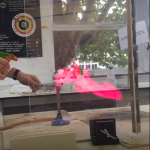
Part of the reason for this is the practical work we undertake – this takes two main forms, the class practical and the teacher demonstration.
When thinking about chemistry demonstrations, most students (past and present) will think of bangs, explosions and fire – all good things, but all over rather quickly. Some of you might remember, as I do, the disappointment when a teacher got you excited for a demonstration, only to watch it fizzle, sputter, and their subsequent and despondent “it wasn’t supposed to do that…
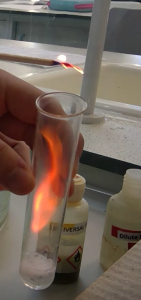 Imagine if we could replay, in slow motion, our favourite demos, to watch the magic of reality unfold frame by frame. Imagine always being able to see the demonstration clearly, regardless of where you were in the class. Imagine if we had a backup in case a demonstration, for whatever reason, went awry. Imagine if we were teaching a different topic entirely, and felt that now would be a wonderful time to illustrate our point with a display, but there was no time to throw it together. (Imagine if you wanted to show all your friends really cool science videos…)
Imagine if we could replay, in slow motion, our favourite demos, to watch the magic of reality unfold frame by frame. Imagine always being able to see the demonstration clearly, regardless of where you were in the class. Imagine if we had a backup in case a demonstration, for whatever reason, went awry. Imagine if we were teaching a different topic entirely, and felt that now would be a wonderful time to illustrate our point with a display, but there was no time to throw it together. (Imagine if you wanted to show all your friends really cool science videos…)
These were the ideas that I had in mind when I started recording demonstrations during lessons at Wimbledon High School. Since then I have put together a catalogue of over twenty videos of common classroom demonstrations, and played them countless times. Using our Windows Surface Laptops, and connecting wirelessly to our SmartBoards, I am able to project what I am recording while it is being recorded.
The advantages are huge. Twenty students cannot all see one small beaker on a desk, but project it to the room and they can all get a perfect view. Sometimes the eye is not quick enough, or we blink, but with a video, we can go back and watch it again. We can slow it down, we can analyse frame by frame, and our learning is richer for it.

“Boom” goes the thermite.
Another aspect of the videos that I think particularly embodies the spirit of learning here at Wimbledon High is the sheer joy that students find in watching these demonstrations. “Ooh”s and “Ah”s are just as gratifying on recording as they are the first time you listen to them live in a lesson. One of our stated aims here at Wimbledon High is to nurture curiosity and a sense of wonder, and listening to some of the clips below, I hope you would agree that we are doing just that.
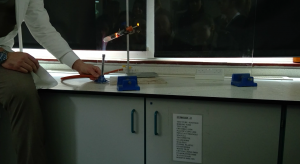 “Woah!”
“Woah!”
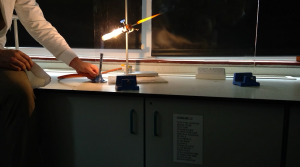 “WOAAAAH!”
“WOAAAAH!”
Where does this leave the future of chemical education? I think that the next logical step would be to record the method of class practicals – so that these videos can be distributed to students in advance of lessons and set as required viewing for the lesson. This would empower students to feel more confident with their equipment, have more time in the lesson to gather data, and to have more belief in their own abilities as scientists, encouraging their independence as learners. This would also prepare them well for scientific disciplines at university, which often require you to familiarise yourself with pre-lab exercises before entering a laboratory.
This is also a promising avenue for developing school partnerships. These videos are broadly applicable to many chemistry curricula, and we are fortunate at Wimbledon High to have excellent facilities and lab technicians. Sharing the fruits of our chemical labour is quick, easy, and importantly very beneficial to the education of others. I have already begun sharing my collection with another school and look forward to increasing their reach as time goes on.
Science is a practical discipline, and chemistry is a particularly visual subject. By offering students more opportunities to experience its beauty we open them up to a world of possibilities; an exciting pathway to deeper understanding of the universe, a subject both big and small, with deep history and philosophy, heroes and villains, and instil in them a lifelong appreciation for nature.
STEAM, our new space at Wimbledon High…
http://whs-blogs.co.uk/teaching/steam/


